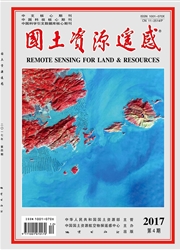

 中文摘要:
中文摘要:
随着土壤湿度与海水盐度卫星(SMOS)发射计划的顺利开展和AMSR—E(Advanced Microwave Scanning Radiometer—Earth Observing System)业务化运行服务之后,人类用星载微波辐射计监测土壤水分是空间技术上的又一次飞跃,但土壤水分的反演精度受到微波辐射计低空间分辨率观测像元的空间异质性和地形的影响,尤其山区地形对大尺度被动微波遥感观测影响显著,其中包括微波辐射的传输路径受海拔高度的影响,地表发射特性受地形坡度和坡向的影响,山体间的多次反射和地形的阴影效应也会改变地表的散射特性。目前,数项微波辐射地形效应的模拟研究已在国内外开展,并据此提出了一些简化的地形校正方法。为了使人们对该领域研究有一概括了解,基于电磁波辐射传输的物理机理和地表形态特征的统计分析,首先探讨了地形效应对微波辐射传输和地表微波辐射特征以及土壤水分反演算法的影响,然后通过地形在微波辐射研究中的最新进展综述,提出了目前研究中存在的问题以及进一步的研究方向。
 英文摘要:
英文摘要:
As SMOS (Soil Moisture and Ocean Salinity)mission has been carried out smoothly, and AMSR -E ( Advanced Microwave Scanning Radiometer - Earth Observing System) services have been conducted, people have achieved another great leap forward in monitoring surface soil moisture by satellite - borne microwave radiometer in space technology. Since space resolution is coarse under satellite microwave radiometer, the accuracy of retrieving soil moisture has been conditioned by space heterogeneity and relief effects. Mountainous terrain on a larger scale than wavelength has such significant effects on passive remote sensing as altitude role in microwave transmission path, topographic slope angle and aspect effects on surface emissivity, and multi -reflection between mountains or shadow effect on the change in surface scatter characteristics. A number of studies on relief effects of microwave radiation have been carried out both at home and abroad, and some simple topographic correction methods have been advanced. Based on the physical mechanism of electromagnetic waves and the statistical analysis, the authors first investigated the relief effects on microwave radiation and inversion of soil moisture, then made a review of the newest advance in relief effect researches on passive microwave remote sensing, and finally pointed out problems existent in current studies as well as orientation for further studies.
 同期刊论文项目
同期刊论文项目
 同项目期刊论文
同项目期刊论文
 Comparison of the classification accuracy of three soil freeze-thaw discrimination algorithms in Chi
Comparison of the classification accuracy of three soil freeze-thaw discrimination algorithms in Chi Estimation of effects of a freezing environment on vegetation using model simulation and a truck-mou
Estimation of effects of a freezing environment on vegetation using model simulation and a truck-mou 期刊信息
期刊信息
